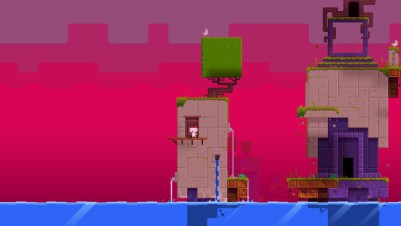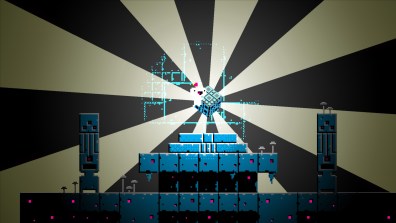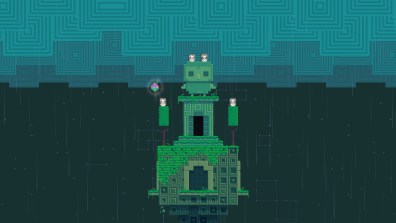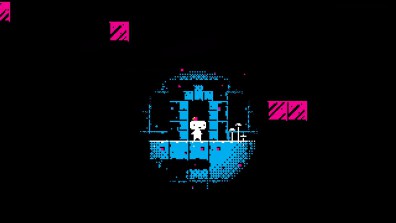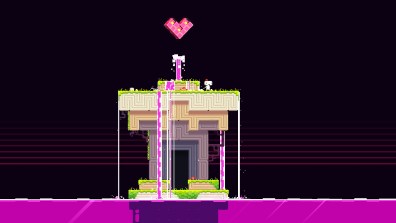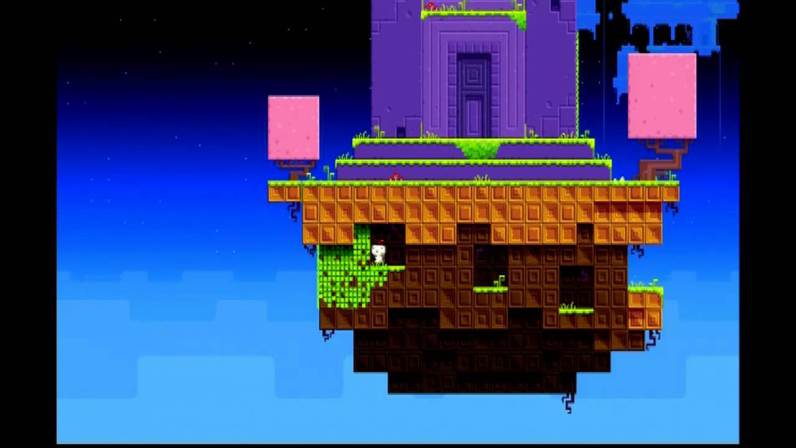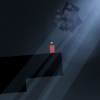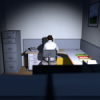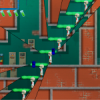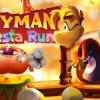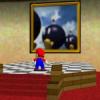What comes to mind when you think of Fez? For some it’s the five-year development time and the controversial behavior of its lead developer. In June last year Polytron head Phil Fish announced Fez II only to cancel the game a short month later after a particularly gaudy Twitter feud. Early adopters of the game may recall the seemingly impossible Black Monolith puzzle, which concerned a Black Monolith (a homage to 2001: A Space Odyssey), a burnt treasure map with only half of an input code, and seemingly no other clues. Eventually the puzzle was beaten when members of the community brute forced the final input code to earn a remarkable 209.4% completion. Others may remember the disastrous game update that tragically corrupted a majority of players’ save data, and some may just think of the dinky red hat. Despite the many controversies that surround Fez however, there is one particular moment that stands out: Sync.
In Fez players control Gomez, a little white creature that’s only defining feature is a magic fez acquired from a talking hexahedron. Donning the hat allows Gomez to literally rotate the 2D world beneath his feet, 90 degrees at a time, and each turn reveals more passageways and characters to interact with. Through puzzle solving mechanics, players are tasked to collect scattered cube pieces to re-stabilize the world. It’s the popular “more than meets the eye” allegory married to a “stop and smell the roses” aesthetic. From its hand-chiseled pixel art, to the masterful chiptune soundtrack by Disasterpeace [Editor's note - the version of the track "Sync" on the soundtrack is different from the version in the game], the world of Fez is glorious to behold and oft breathtaking.
Fez is also full of mystery. Throughout the world are three sets of glyphs: letters, numerals, and button inputs. Players can achieve 100% and finish the main story without ever having to decipher the world’s language. But for those that take the time to learn its secrets, Fez becomes a modern incarnation of old-school gaming and the nefarious Zelda myths. Dozens of secret button inputs and hidden levels adhere to times before video game cheat sites when players would trade their gaming urban legends and spend hours sitting on their heads just for the possibility of unlocking the Triforce. There’s many beautiful moments like that in Fez, but none more so than Sync.
Hardcore Fez players would have a stack of papers chronicling codes, ciphers, and potential puzzle solutions. They would be running circles around the world, noting every pixel and every possible clue. Eventually, they would return to a waterfall near the beginning of the game. A secret door is there behind the waterfall, already unlocked, but there’s something else—a wall. Cut into the otherwise expansively empty wall is a tall rectangle. It’s the outline of a door (painfully obvious), but with no way to enter. The player recalls seeing the same wall very early on, but it had been glowing with gold markings all around. How the hell do I get those back? They start fiddling with their notes, jamming on buttons, racking their brain until the in-game day turns to night.
That was it. Nighttime. All players needed was patience, an epitome of the game. The door begins to glow, and on its face is an input code. The sun sets as the waterfall rushes beside, like the entrance to El Dorado. The input code: Left, LT, Left, Right, RT, Down, Up, LT.
A rewarding, 8-bit chime begins to play as the door collapses into the ground, leaving a gaping cave ripe for entry. Press Up to enter.
It’s immediately obvious that this room is unlike any other. The screen is pitch dark except for an aura of light surrounding Gomez. The platform he’s on azure and speckled with pink gems, with another ledge above. In the adjacent darkness a pink square appears, accompanied by a high musical chime. It flickers twice, each time another note, before disappearing. Another pink square appears, again timed with the musical beats. The player then jumps onto the pink box and clambers onto the upper ledge. The music starts. A chiptune beat that strums thrice and finishes with the flickering pink squares—“boop boop.” The player keeps moving upwards, timing each jump with the platforms as though suddenly playing a music-rhythm game. The world remains dark, but the platforms and flushed gems sparkle like stars in the blackness to guide the way. Higher and higher; 8-bit drums begin with a quiet ticking. The room is filled with music, until finally there’s a door.
The new room resembles the first: there’s only one way to go. Gomez climbs to the next platform, as slowly each instrument fades. A lone pink box appears and the player knows what to do. It flickers. There’s nothing above, but the player knows to jump—and another platform appears to catch them. Repeat. The music disappears, until the only remnants of song are echoes and reverberations.
Sync is a moment when Fez gets itself right. While it’s not the most challenging puzzle in the game, it infuses every element that makes it great. A secret door hidden away for those who take their time in the world. Puzzle platform gameplay that, through its musical mechanics, synchronizes with the player into perfect immersion. It’s the all-encompassing atmosphere of wonder and mystery that defines Fez.
Fez was Phil Fish’s debut game as a developer. It was also unfortunately his swansong; a series of very public disputes, arguments and run-ins with the gaming community and gaming journalists eventually resulted in a very loud and very public exit from the industry. Moments like Sync remind us that behind all of that controversy, the reason we cared in the first place is because of just how amazing an experience Fez was to start with.


